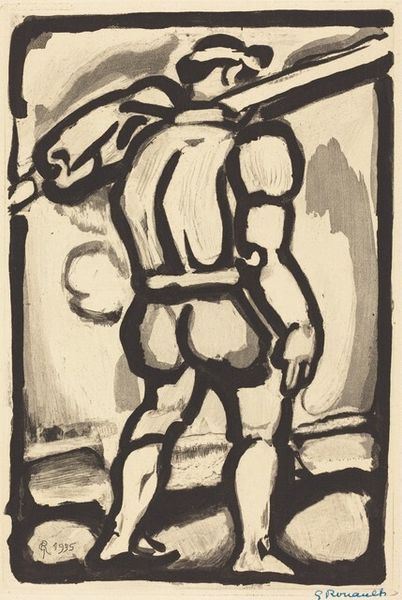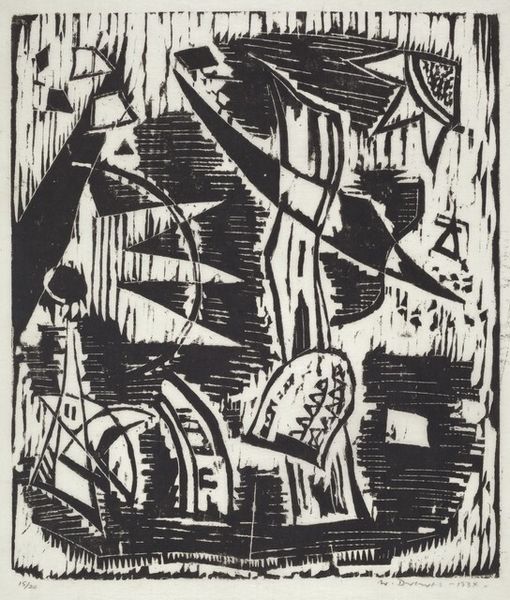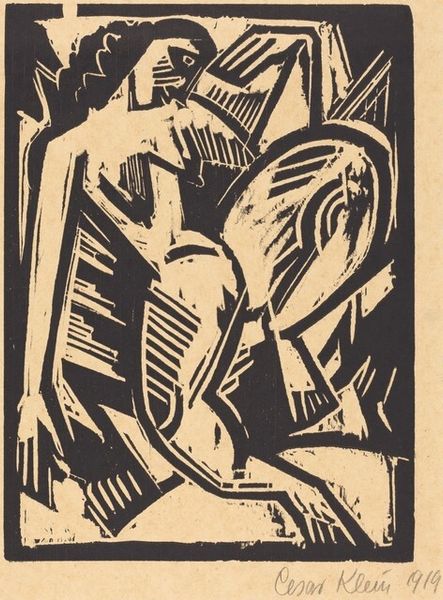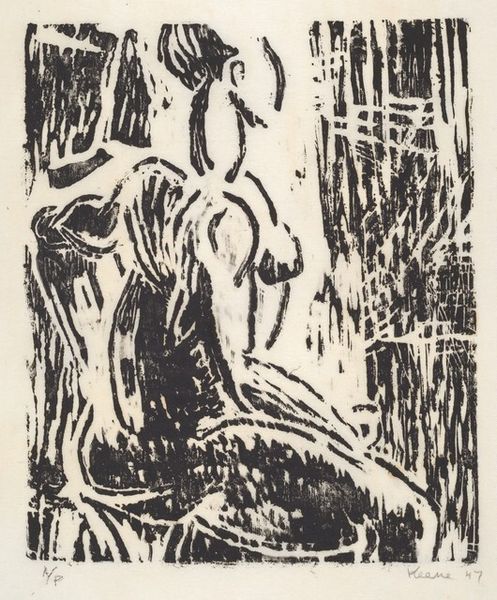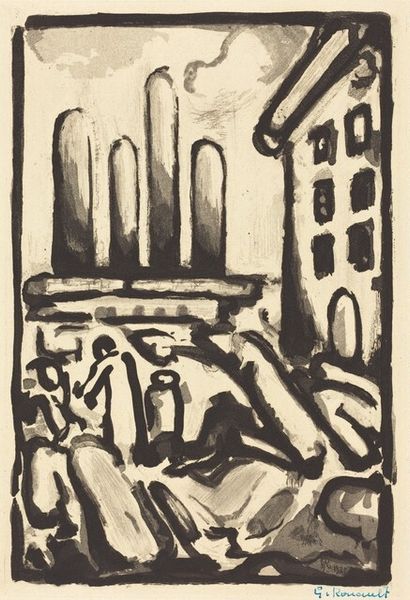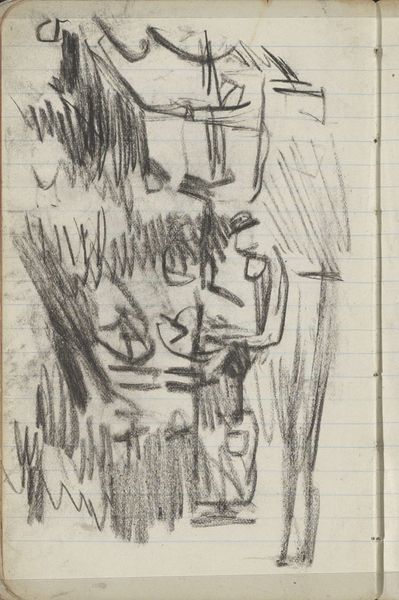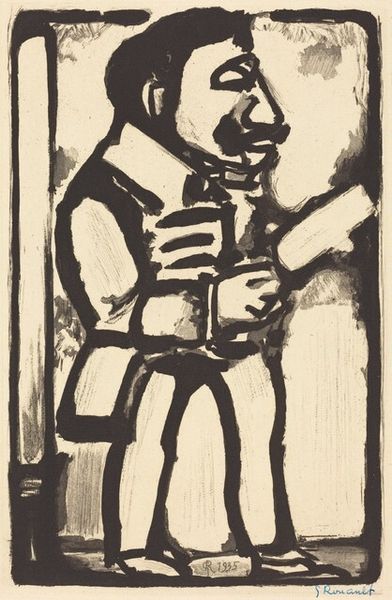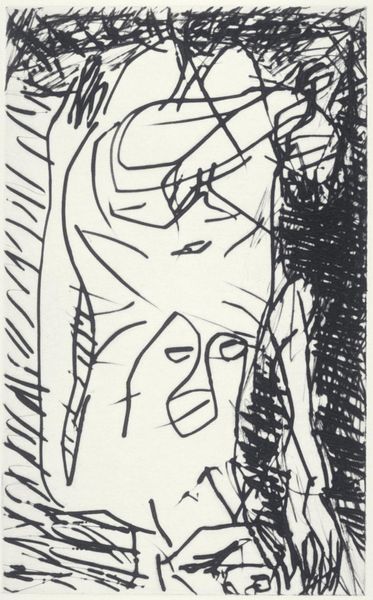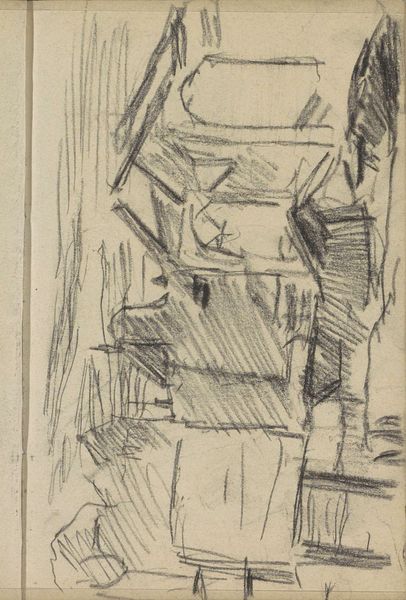
Copyright: National Gallery of Art: CC0 1.0
Editor: So, here we have "Aide-Borreau (Portant un de Bois de la Croix)," a 1936 print by Georges Rouault. It’s graphic, with these thick, bold lines… almost like a woodcut, but an ink drawing, I think? It feels really powerful, almost confrontational in its simplicity. What stands out to you when you look at this, Professor? Curator: The most potent element to me is precisely that raw simplicity, but what that evokes for the viewer today might be disconnected from its time. Rouault’s deep religious conviction permeated everything he did. See how the figure, burdened by the beam, immediately recalls Christ carrying the Cross. This isn’t just any figure; he *is* everyman bearing his own weight. Do you pick up on the hints of Expressionism? Editor: I do. The distorted perspective adds to that feeling, right? The weight seems unbearable and is externalized through this expressive representation, or am I overreaching? Curator: Not at all. The visual distortions are crucial. Consider how they amplify the emotional burden of the subject. But it's more than just expressive—the visual vocabulary itself acts as a spiritual metaphor for the pain and resilience of the human spirit when facing adversity. Editor: I hadn't thought about it like that before! So, the weight and burden are part of something universal that’s shared by those figures. Thanks for bringing that deeper context. Curator: My pleasure. Reflecting upon such enduring themes always offers fresh perspectives. It reveals our shared humanity, a recognition that these images connect us to a timeless human drama.
Comments
No comments
Be the first to comment and join the conversation on the ultimate creative platform.
